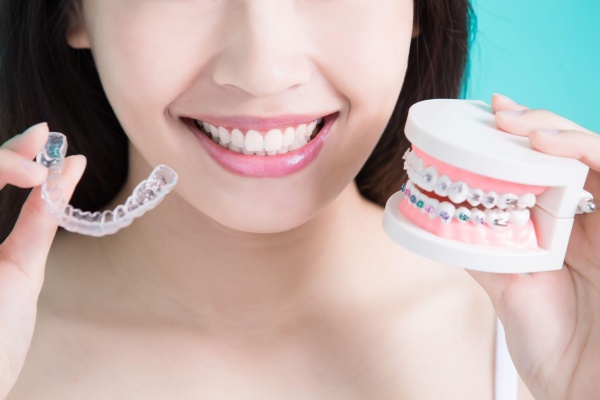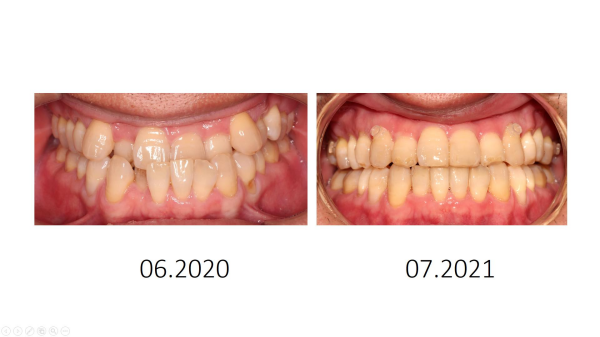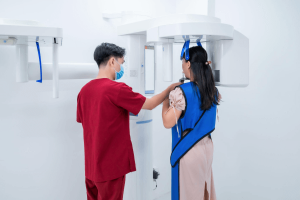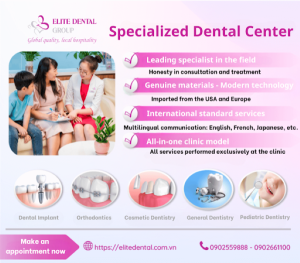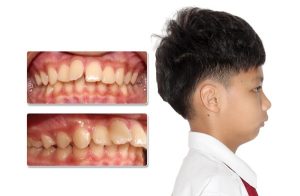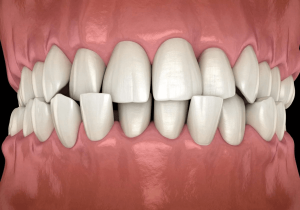Table of content
Orthodontics is the optimal method to correct misaligned, crowded, protruding, or recessed teeth. However, the duration of orthodontic treatment can extend beyond 24 months, leaving patients wondering how to expedite the process. This article will help you significantly shorten the orthodontic treatment time. Let’s explore together!
1. Start Orthodontics as Early as Possible
According to Dr. Do Quynh Nhu, a member of the Ho Chi Minh City Orthodontic Association and an orthodontist at Elite Dental, one way to speed up orthodontic treatment is to start early. Especially during the golden period (ages 6-12) when the jawbone is not yet fixed, early intervention helps doctors easily correct misaligned teeth to their proper positions. This not only shortens treatment time and yields better results but also reduces the risk of dental diseases and minimizes the need for complex surgeries.
2. Choose the “Right” Orthodontic Method
Typically, for complex misalignments, traditional braces are a better solution. For mild to moderate cases of misaligned, protruding, or crowded teeth, clear aligners like Invisalign can provide effective results, ensuring aesthetics and convenience for daily communication, eating, and living. For children aged 6-12, additional orthodontic appliances can be used to address jawbone and dental structure abnormalities early on. This helps children achieve a healthy set of teeth with proper occlusion, good chewing function, accurate pronunciation, and a foundation for confident development later.
Choosing the right orthodontic method depends on each individual’s dental condition, needs, financial capability, and doctor’s recommendations. The best approach is to consult a doctor early for an examination, advice, and determination of the most optimal and cost-effective treatment method.
View more: Considering Braces? Essential information you should know
3. Choose a Reputable and Experienced Dental Clinic
Orthodontics is a specialized dental treatment that requires well-trained and experienced doctors. This ensures that doctors can develop effective treatment plans, achieving comprehensive results in bite alignment, facial aesthetics, safety, and shortening the orthodontic journey.
At Elite Dental, the orthodontic team has many years of international training and over 10 years of experience practicing both clear aligners and traditional braces. Therefore, doctors understand the different conditions of teeth and jawbones, ensuring the development of optimal plans suitable for each customer to expedite the orthodontic process and achieve the desired results.

Elite Dental has successfully completed thousands of different orthodontic cases. Patient data is carefully stored, and Elite Dental is ready to share this information with customers during consultations.
Each year, Elite Dental continuously updates modern technology and equipment such as 3D Trios dental scan technology, Clincheck software, and Sirona X-ray machines (Germany) to support quick and effective orthodontic treatments. The clinic also invests in modern facilities.
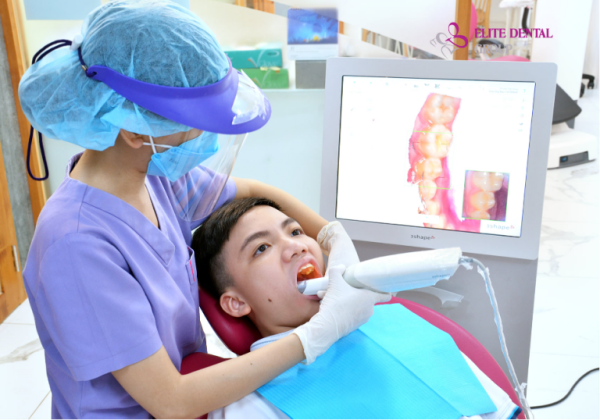
View more: Orthodontic Treatment: Detailed Stages Explained
Here are some successful orthodontic cases at Elite Dental:
Case 1:
Mr. T, before coming to Elite Dental, had misaligned bite issues affecting aesthetics and eating enjoyment. He was prescribed to have 2 upper wisdom teeth extracted. After that, he continued the first treatment phase with 31 Invisalign clear aligners. He is currently scanning his teeth and preparing to receive the new adjustment aligners. This progress has made him more excited, knowing that his orthodontic journey is nearing completion, giving him a confident and healthy smile.
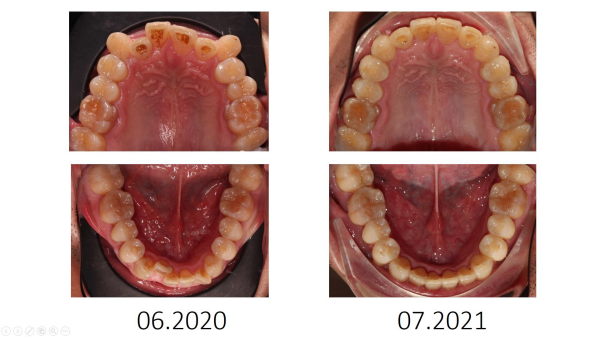
Case 2:
Another case is Thy Lam, who faced crowded teeth and a narrow jaw, making it difficult for her to eat and communicate. Initially, Thy Lam came to Elite Dental with the goal of getting dental veneers for a quick fix for her misaligned teeth. However, the doctor advised her to undergo orthodontic treatment to achieve beautiful and healthy teeth.
Following the comprehensive consultation path focused on the oral health benefits for customers by Elite Dental doctors, Thy Lam now has a straight and radiant smile. The crowded teeth have returned to the correct positions. Her orthodontic journey has ended, but a new, brighter journey is welcoming her ahead, thanks to the dedication and enthusiasm of the Elite Dental team.
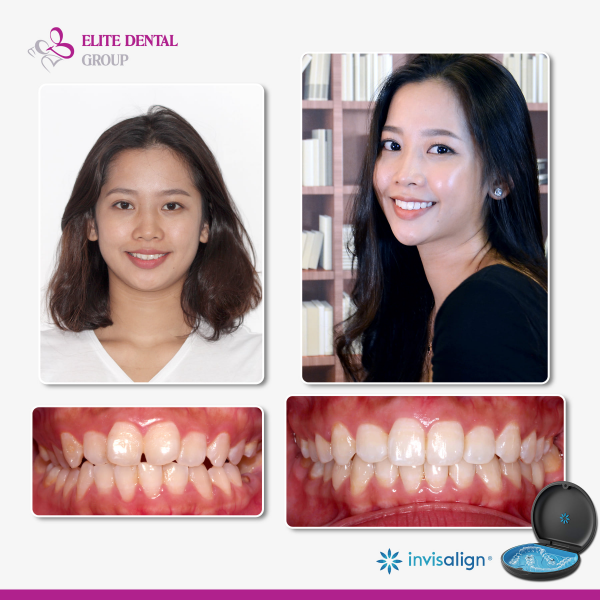
4. Develop a Reasonable Diet
Another tip shared by doctors to expedite orthodontic treatment is to build a scientific diet. Initially, when getting braces, since you may not be used to the orthodontic appliances, the tongue, jaw, and lips may not move flexibly. Therefore, doctors recommend eating soft, liquid foods that are easy to swallow, such as porridge, soup, noodles, and pho, to avoid overworking the teeth and prevent pain.
Patients can also comfortably consume milk and dairy products such as cheesecake and yogurt to provide nutrients for the body. Smoothies and fruit-vegetable juices are also essential in the daily diet to boost immunity and prevent physical weakness due to prolonged tooth pain.

In addition to foods that should be added, patients should avoid the following foods to shorten the orthodontic period:
- Hard foods such as candies, ice, and nuts, which can cause tooth sensitivity, easy movement, and broken wires or brackets.
- Sticky foods such as sticky rice cakes and chewing gum, which require a lot of chewing effort, causing severe pain, and sticking to orthodontic appliances, making cleaning difficult and promoting bacterial growth leading to dental diseases.
- Sugary foods such as candies, fast food, and soft drinks, which can increase acid production in the mouth, leading to the risk of tooth decay, enamel erosion, and wear of wires and brackets.
5. Quit Bad Habits Affecting Teeth
To expedite the orthodontic process and avoid the risk of relapse after braces, patients should quit bad habits like nail-biting, chewing ice, biting pen caps, or using teeth to open bottle caps. These actions, when performed long-term, can cause severe tooth misalignment and damage orthodontic appliances, requiring more time for adjustments.
Additionally, habits like grinding teeth and clenching can create significant pressure on the teeth, leading to damage to the teeth and gums, increasing the risk of dental diseases.
6. Maintain Proper Oral Hygiene
For those with braces, food easily gets stuck in the brackets and wires, making cleaning difficult. If not cleaned thoroughly, it can lead to plaque buildup, causing tooth decay, gum disease, periodontitis, gum irritation, or bad breath. This also affects oral health and disrupts the orthodontic progress. Therefore, it is essential to take care of your teeth carefully through the following tips:
- Use a soft-bristled toothbrush: Choose a toothbrush with soft bristles and a suitable size to clean teeth easily without harming the gums. Additionally, you can use an interdental brush to remove food particles and debris more effectively.
- Choose fluoride toothpaste: Using fluoride toothpaste daily not only protects and restores weakened enamel but also treats early tooth decay, effectively preventing further decay.
- Brush teeth properly: Brush teeth twice a day using a circular or vertical motion on the tooth surfaces from inside to outside. Brush gently to avoid damaging and receding gums. Also, don’t forget to clean your tongue for a fresher breath.
- Use water flossers, dental floss, and mouthwash: They help remove leftover food particles that the toothbrush couldn’t clean, protecting oral health and shortening the orthodontic process.
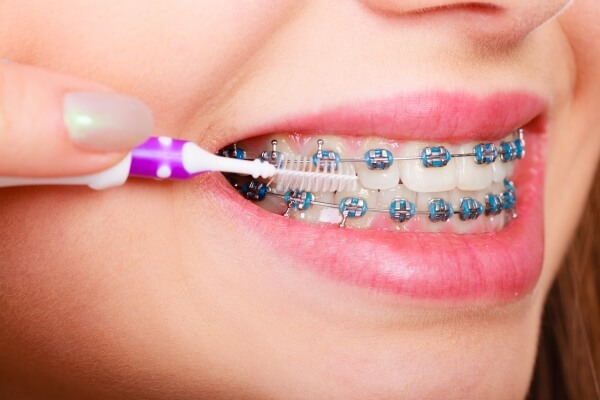
View more: Keeping your teeth clean with Braces: Essential Tips and Tricks
7. Regular Dental Check-ups as Scheduled
During the orthodontic process, patients should have regular check-ups according to the doctor’s schedule. This allows the doctor to assess if the teeth are moving in the right direction and to detect any abnormalities early for timely intervention, thereby expediting the orthodontic process.
Is Accelerated Orthodontics Safe?
Orthodontics is not only a specialized treatment but also requires high patience from the patient. Although accelerating the orthodontic process helps you achieve beautiful teeth quickly or reduces the pain during treatment, this approach can inadvertently disrupt the biological principles of the body.
This can lead to unpredictable consequences, such as tooth loss. The reason is that teeth move too quickly, preventing the bone from regenerating in time to compensate for the lost tooth bone. As a result, the tooth roots become unstable and can easily fall out of the jawbone, and in severe cases, it can lead to permanent tooth loss.
Therefore, accelerated orthodontics is not a wise decision. Instead, you should follow the treatment plan provided by your doctor and implement the above methods to shorten the orthodontic period safely without causing severe damage to the teeth.
This article has introduced 7 ways to speed up the orthodontic process for your reference. The speed of orthodontic treatment depends on many factors, not only the expertise of the doctor but also the patient’s care and diet.
Furthermore, if you are too impatient, it may not bring the desired results and can affect oral health. Therefore, patients should invest time, effort, and patience in following the doctor’s instructions to achieve the best results.
Related posts: > What Are Crooked Teeth, and Can Invisalign Correct Them? > Can Braces or Invisalign correct an overbite (overjet)? > How Can Braces Fix an Underbite?


